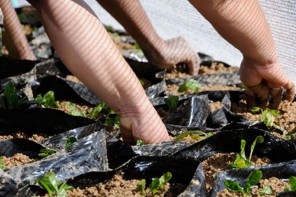The Sustainable Energy Society of Southern Africa (SESSA) launched its “Young Sessa” division at the international Solar Energy Society (ISES) 2009 World Solar Congress. Since the launch, the organisation has been visiting schools to educate young learners about renewable energy.
“We don´t just want to plant trees, we want to grow people and make them sustainable members of society,” said Sessa council member Jon Adams.
The aim of Young SESSA is to impart knowledge about the significance of renewable energy to the youth and to expose them to alternative fossil fuel energy generation while they are still young.
Headed by Harald Schulz, owner of SunToy (a company that manufactures and distributes solar toys) and Karin Petzer, director of ClassSmart (a company that aims to improve the practice of teaching in South Africa and support curriculum development), the team has been working on holding workshops at as many different schools as possible. They present to well-resourced schools as well as underprivileged schools to promote renewable energy to as many young people as possible across the societal spectrum.
Teaching through roads-shows
The workshops entail a road-show, where “Mr. Sunshine” speaks about electricity, renewable sources of energy and the impact that humans have on the environment. The first road-show was held at Northcliff High School where about 700 children crammed into the school hall to attend the workshop.
The road-show at Northcliff High School was held the day after the National Energy Regulator of South Africa (NERSA) announced that Eskom’s power tariff would be increased by 24,8% on April 1 2010 and that subsequent increases of 25,8% for 2011/2013 and 25,9% for 2012/2013 will follow. During the workshop, the children were shown (through visual examples) what energy is anticipated to cost when they are adults.
Besides teaching children about the realities of South Africa’s electricity shortage, children also learn interesting things like the fact that maize meal can be used as an energy resource through biomass and how to calculate the area of PV solar panels required for their school to be independent of Eskom.
The presentation by Young SESSA takes just under an hour. After the presentation, there’s a practical part of the workshop where a selected group of 100 pupils get to assemble a solar-powered cars, add wheels and a motor and then race against each other. Other practical experiments that are presented at schools include building a solar cooker and various solar water experiments. The team brings a “Solar Energy Van” equipped with all the tools and materials needed for the presentation.
“We realise that schools have planned schedules, but the presentation will take two hours. Between 11:00 – 13:00 would be suitable as we get best results in the midday sun,” said Karin in a post on her website (www.classsmart.co.za).
Sponsoring a road-show
Each road show costs R6 800 and needs sponsoring from SESSA or other interested parties. Some of the benefits of being a sponsor for the road show include being able to invite local media to aid promotional efforts and the sponsor will get an entry in the Young SESSA webpage as a sponsor. The sponsor is encouraged to bring representatives and display their promotional banners during the school visit and all visuals of the presentation will carry the sponsor’s name. Young SESSA arranges the booking of the nominated school and conducts the workshop.
The liveeco team




